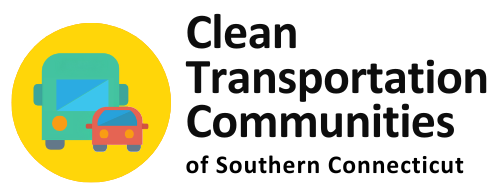
If 90% of life is showing up, the other 10% is listening and following up.
Here’s how that 100% led to a $7.6 million federal grant for 25 electric school buses for Connecticut’s vocational-technical high school system.
EPA’s New England Region held a Connecticut-specific webinar (click “View details”) on June 9th of this year on EPA’s Clean School Bus funding program. Lou Camacho showed up. Lou is a veteran automotive instructor in Connecticut’s Technical Education and Careers System (CTEC) and now the manager of the system’s automotive programs as well as its student busing. Greater New Haven Clean Cities (GNHCC) showed up too, and we noticed that Lou asked a lot of questions.
Spurred by his strong interest, we emailed Lou. We wrote him that Clean Cities coalitions are the “boots on the ground” for federal, state, and private sector programs working to reduce transportation emissions and we wanted to help. Lou took the bait and we got together on the phone the following week. Lou explained he was looking to replace 25 buses across the 20-school system and would love to go electric. He had enough funds to replace with traditional diesel buses, but would need additional funds for electric buses.
We did a little research on options. We knew New Britain-based school bus operator DATTCO was running Connecticut’s first electric school bus, so on a planning call for our own webinar, we mentioned to DATTCO president Don DeVivo what Lou was looking for.
We got back to Lou. He was excited that since DATTCO was CTEC’s current bus provider, and he was already talking with them about diesel buses, he could follow-up with them about the Clean School Bus funding and electric options.
Fast forward three months and a $7.6 million grant is won! They, literally, won the lottery – and one of the nation’s largest grants. Lou Camacho says, “We are ecstatic!” and thanks GNHCC for our encouragement and support.
This grant is a huge step, and GNHCC will be working with Lou and DATTCO to keep moving this project forward. Maybe some additional funding will be necessary and state grants included in last year’s SB4 / PA 22-25 Clean Air legislation might help. Perhaps a working alliance with the statewide ACES UP program, will produce a win-win solution to building out Connecticut’s school-based EV charging network. Support for CTEC’s electric vehicle training programs might incorporate EVITP certification and help grow Connecticut’s EV-savvy workforce.
It’s a big lift to move people and goods around our state with smarter vehicles that protect our air, reduce respiratory disease, and protect Connecticut’s shoreline communities. Leaders like Lou Camacho, CTEC, DATTCO, and EPA’s Region 1 staff move us all forward.
(Kudos too to Fall Village Regional School District 1, Sharon Regional School District 1, and Cornwall School District for their Clean School Bus grants! Also,since EPA’s selection process was by lottery, unclaimed funds may become available to 13 other CT school districts on a wait list.)
